Abstract
Clapper, W. E. (The Lovelace Foundation for Medical Education and Research, Albuquerque, N.M.) and G. H. Meade. Normal flora of the nose, throat, and lower intestine of dogs. J. Bacteriol. 85:643–648. 1963.—An attempt was made to isolate and identify the complete normal flora of the rectum, nose, and throat of beagles. For primary isolation, 12 different kinds of media were used. Incubation of blood agar plates and slants anaerobically, and of thioglycolate broth aerobically, allowed the growth of obligate anaerobes. From the rectal specimens, 20 species of bacteria and 10 species of fungi were isolated and identified. The organisms were similar to those found in the human intestine. Escherichia coli, Streptococcus mitis, enterococci, S. lactis, Bacillus species, and coliforms other than E. coli were most frequently encountered. The frequency of occurrence was approximately the same at both samplings in more commonly cultured bacteria. Pathogenic E. coli were isolated from nearly one-third of the first specimens. These were the only human pathogens observed. In the throat cultures, 29 species of bacteria and 2 species of yeasts were identified, and 27 species of bacteria were identified from the nasal cultures. S. mitis, Neisseria, and coagulase-negative Staphylococcus were most often isolated. The flora was similar to that found in human nose and throat cultures, except that more Haemophilus and pneumococcus and fewer coliforms are generally found in human throats. Organisms resembling human pathogens were group A streptococci and coagulase-positive staphylococci. These were isolated infrequently. It appears that this kind of examination would reveal any significant changes in normal flora that might be related to the health of the animal.
Full text
PDF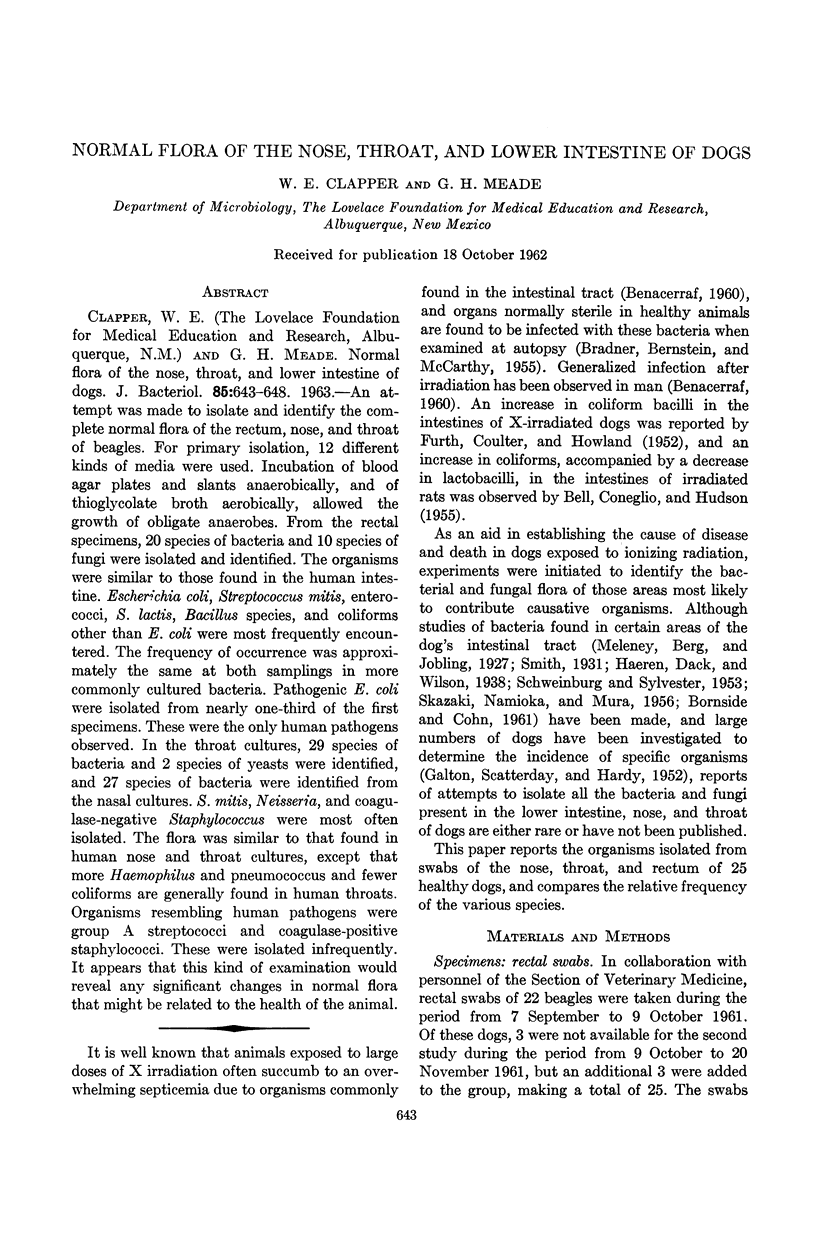
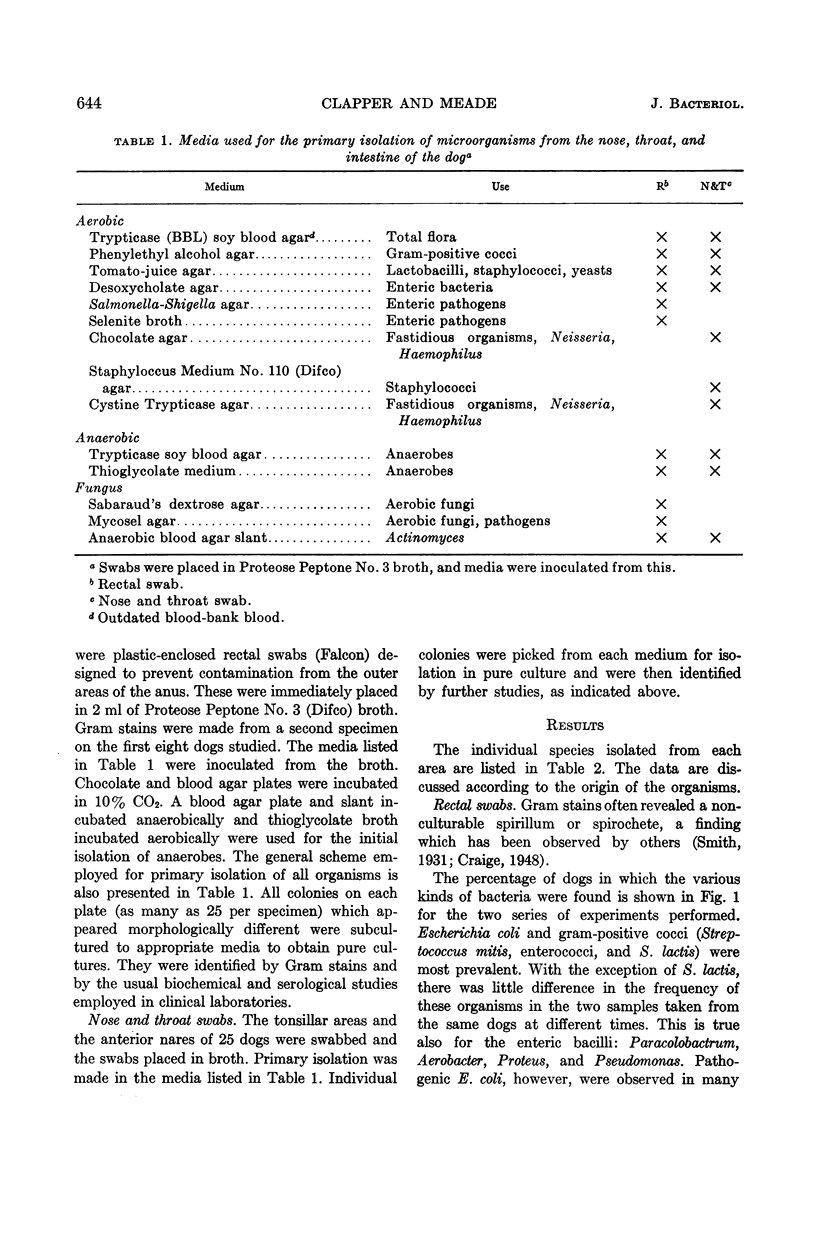
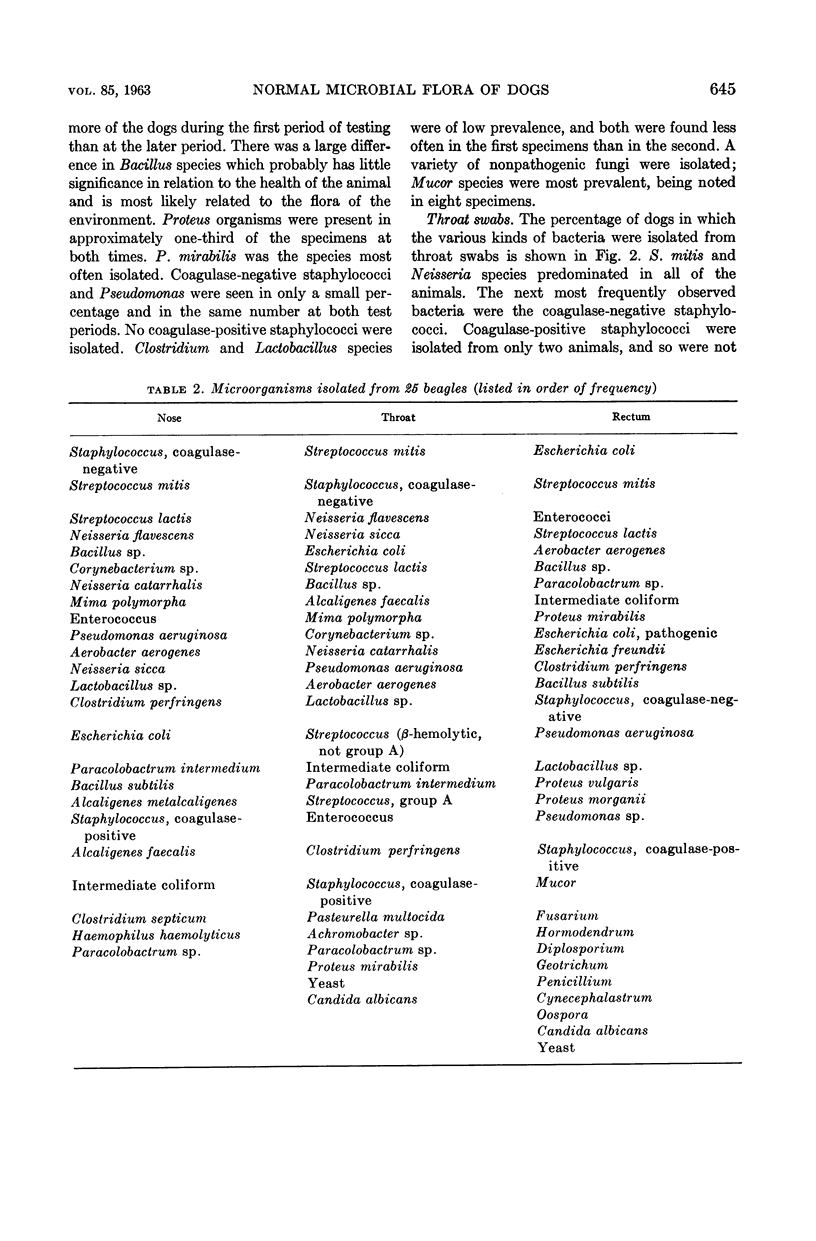
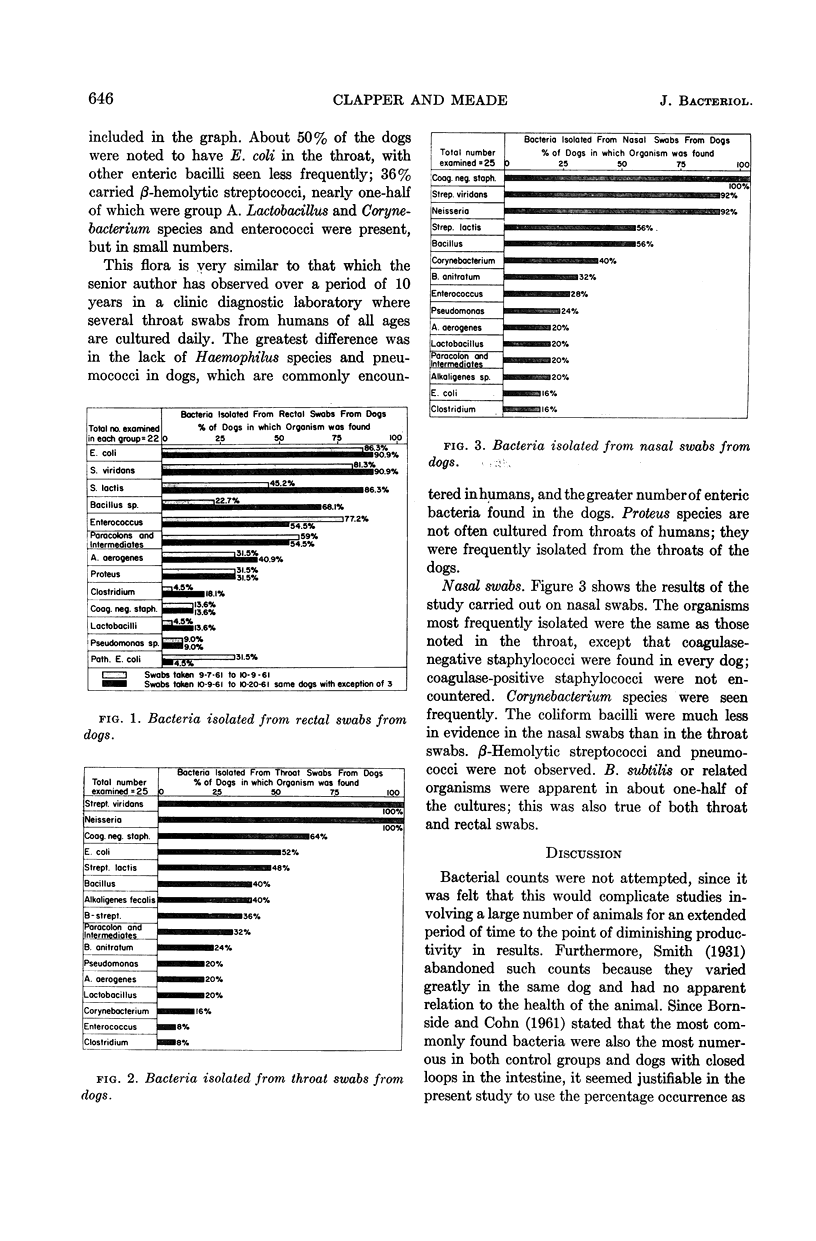
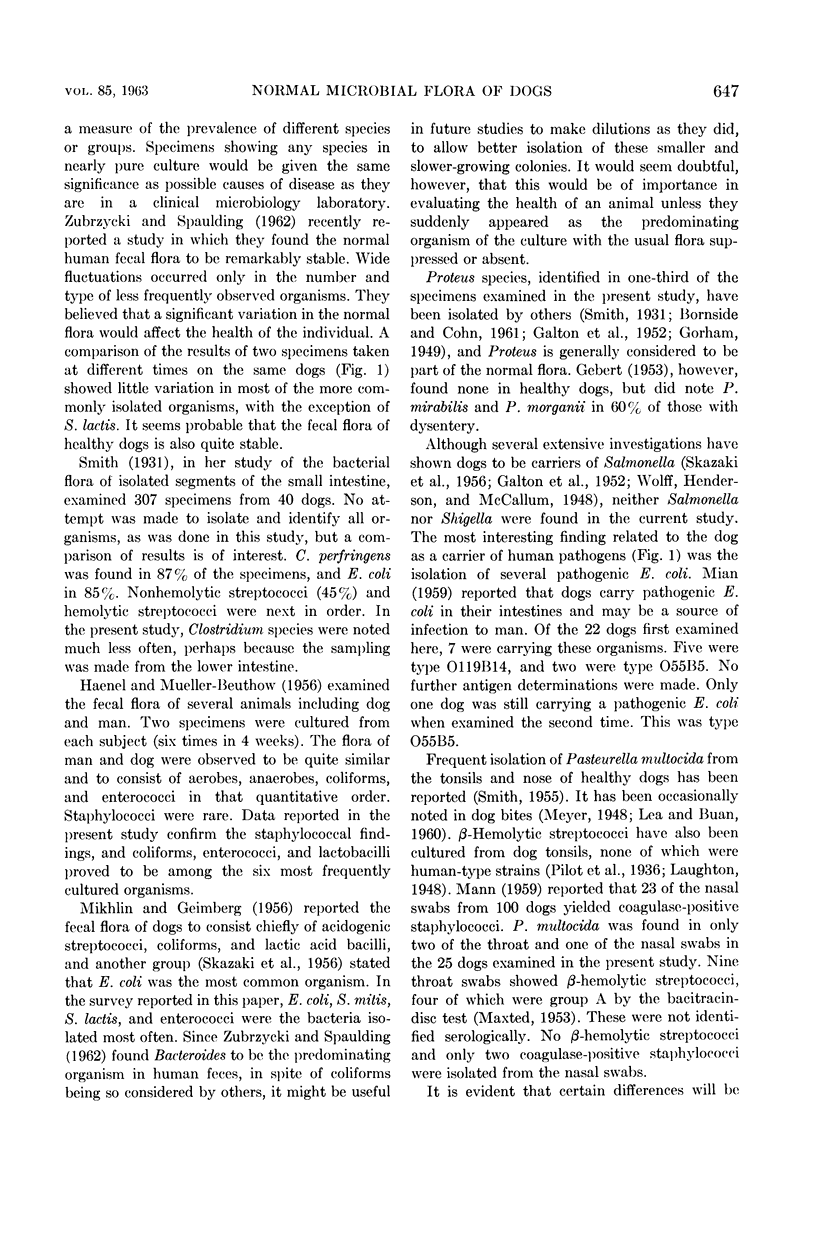
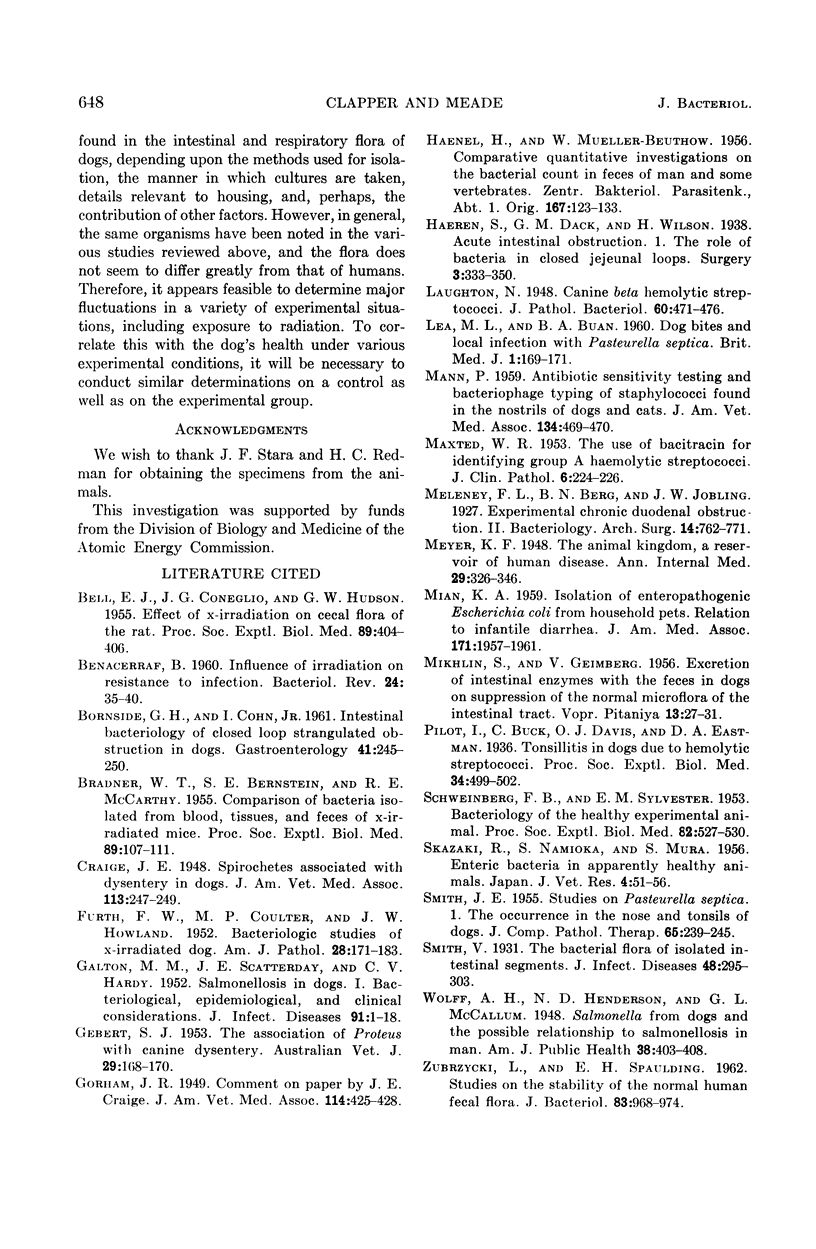
Selected References
These references are in PubMed. This may not be the complete list of references from this article.
- BELL E. J., CONIGLIO J. G., HUDSON G. W. Effect of x-irradiation on cecel flora of the rat. Proc Soc Exp Biol Med. 1955 Jul;89(3):404–406. doi: 10.3181/00379727-89-21825. [DOI] [PubMed] [Google Scholar]
- BENACERRAF B. Influence of irradiation on resistance to infection. Bacteriol Rev. 1960 Mar;24(1):35–40. doi: 10.1128/br.24.1.35-40.1960. [DOI] [PMC free article] [PubMed] [Google Scholar]
- BRADNER W. T., BERNSTEIN S. E., McCARTHY R. E. Comparison of bacteria isolated from blood, tissues and feces of x-irradiated mice. Proc Soc Exp Biol Med. 1955 May;89(1):107–111. doi: 10.3181/00379727-89-21729. [DOI] [PubMed] [Google Scholar]
- FURTH F. W., COULTER M. P., HOWLAND J. W. Bacteriologic studies of the X-radiated dog. Am J Pathol. 1952 Mar-Apr;28(2):171–183. [PMC free article] [PubMed] [Google Scholar]
- GALTON M. M., SCATTERDAY J. E., HARDY A. V. Salmonellosis in dogs. I. Bacteriological, epidemiological and clinical considerations. J Infect Dis. 1952 Jul-Aug;91(1):1–5. doi: 10.1093/infdis/91.1.1. [DOI] [PubMed] [Google Scholar]
- HAENEL H., MULLER-BEUTHOW W. Vergleichende quantitative Untersuchungen über Keimzahlen in den Faeces des Menschen und einiger Wirbeltiere. Zentralbl Bakteriol Orig. 1956 Nov;167(2):123–133. [PubMed] [Google Scholar]
- LEE M. L., BUHR A. J. Dog-bites and local infection with Pasteurella septica. Br Med J. 1960 Jan 16;1(5167):169–171. doi: 10.1136/bmj.1.5167.169. [DOI] [PMC free article] [PubMed] [Google Scholar]
- MANN P. H. Antibiotic sensitivity testing and bacteriophage typing of staphylococci found in the nostrils of dogs and cats. J Am Vet Med Assoc. 1959 May 15;134(10):469–470. [PubMed] [Google Scholar]
- MAXTED W. R. The use of bacitracin for identifying group A haemolytic streptococci. J Clin Pathol. 1953 Aug;6(3):224–226. doi: 10.1136/jcp.6.3.224. [DOI] [PMC free article] [PubMed] [Google Scholar]
- MIKHLIN S. Ia, GEIMBERG V. G. Vydelenie kishechnykh fermentov s kalom u sobak pri podavlenii normal'noi mikroflory kishechnika. Vopr Pitan. 1954 Nov-Dec;13(6):27–31. [PubMed] [Google Scholar]
- SCHWEINBURG F. B., SYLVESTER E. M. Bacteriology of the health experimental animal. Proc Soc Exp Biol Med. 1953 Mar;82(3):527–530. doi: 10.3181/00379727-82-20168. [DOI] [PubMed] [Google Scholar]
- WOLFF A. H., HENDERSON N. D., McCALLUM G. L. Salmonella from dogs and the possible relationship to salmonellosis in man. Am J Public Health Nations Health. 1948 Mar;38(3):403–408. doi: 10.2105/ajph.38.3.403. [DOI] [PMC free article] [PubMed] [Google Scholar]
- Zubrzycki L., Spaulding E. H. STUDIES ON THE STABILITY OF THE NORMAL HUMAN FECAL FLORA. J Bacteriol. 1962 May;83(5):968–974. doi: 10.1128/jb.83.5.968-974.1962. [DOI] [PMC free article] [PubMed] [Google Scholar]


